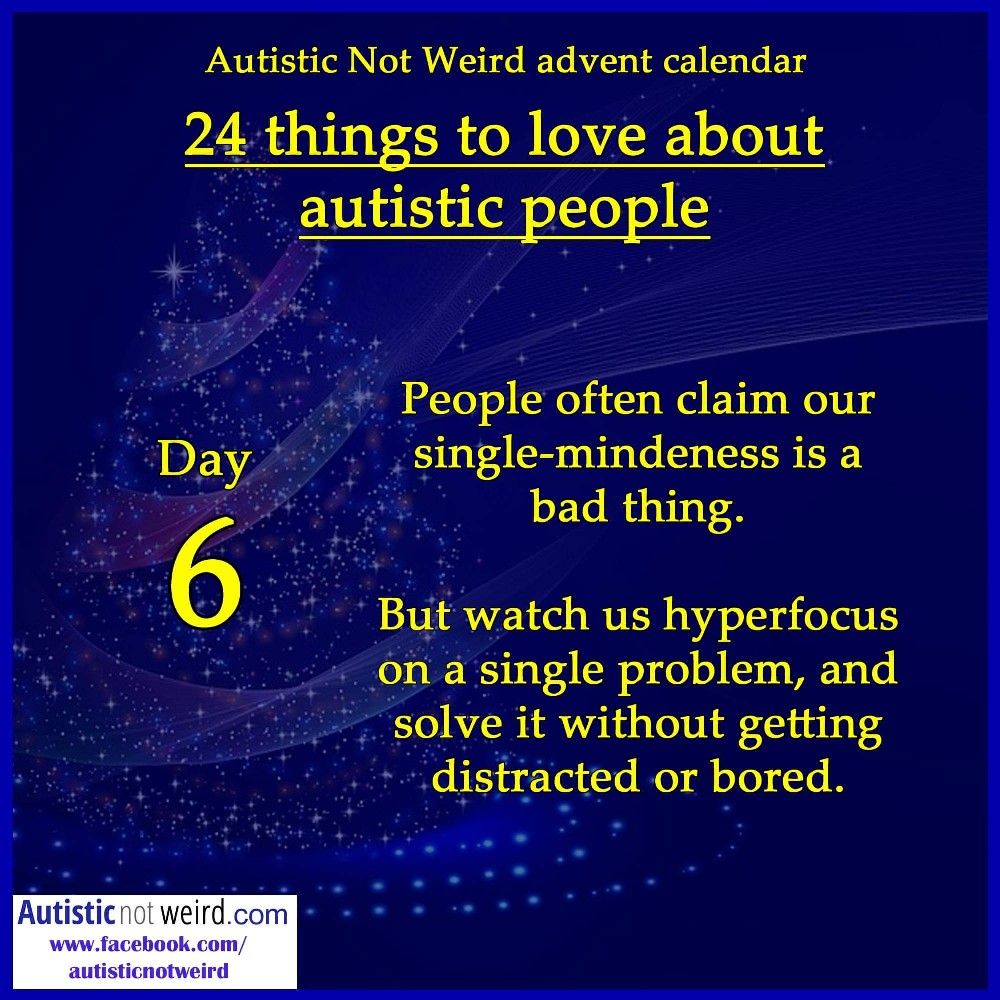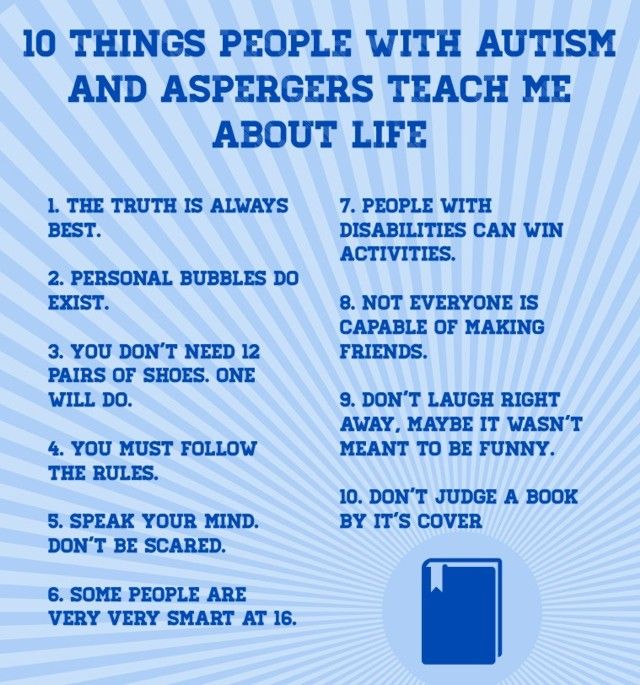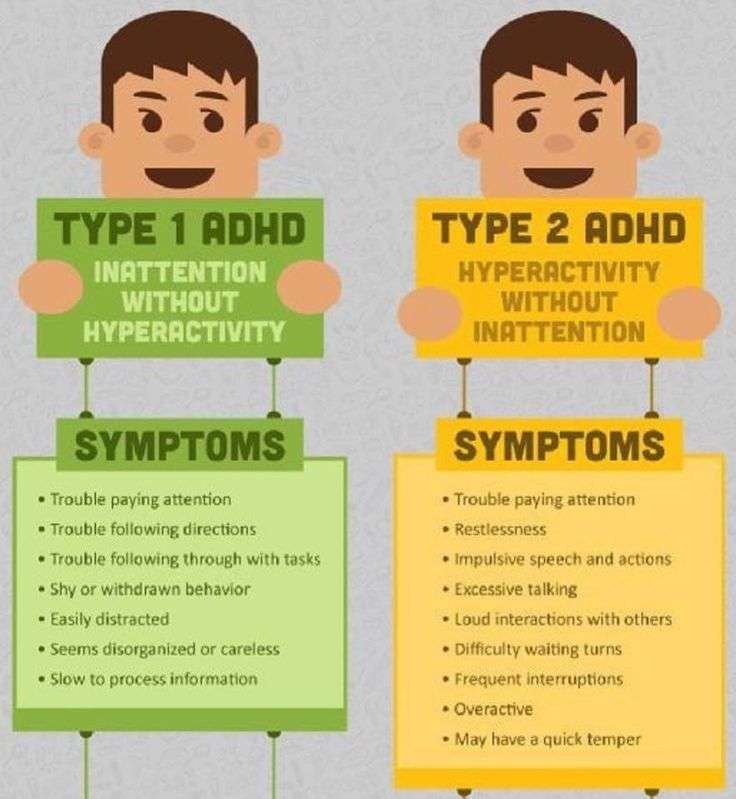What Does High Functioning Mean
So, what does it mean if you are autistic and “high functioning?” It depends. Typically, if someone is diagnosed with ASD: Level 1, they are considered “high functioning.” However, someone’s social skills might be Level 1, and their behavioral issues might be Level 2.
Furthermore, although autism is a lifelong diagnosis that an individual does not “grow out of,” an individual might experience autistic burnout, a condition that causes increased functional deficits.
Factors that contribute to labeling an autistic person as “high-functioning” include how well they are able to hold a job, form and maintain relationships, communicate, and mask their autistic traits. Essentially, the better someone can blend in with a neurotypical society, the higher functioning they are. Because of this, many high functioning autistic people do not get diagnosed until later in life.
Join Our Neurodiverse Womens Group Today
If youre a neurodiverse woman looking for support in California, please reach out to my autism therapy clinic. I would love to meet with you to learn more about your struggles. Then, I can figure out how to best serve you. You dont have to struggle with loneliness and isolation alone, find your tribe!
To begin online autism therapy in California, please follow these steps:
Neurodiverse Working Professionals Are Often Misunderstood
It can be very hard for neurodiverse individuals to make connections with other people at work. Most neurotypicals dont understand the unique challenges neurodiverse people have. Therefore, neurotypicals often misunderstand their autistic colleagues body language and behavior as being aloof, angry, rude, or worse. But, this isnt true. The neurodiverse working professionals I work with at my autism therapy clinic in Palo Alto, California are very caring and very passionate people.
These difficulties may even extend outside of the workplace. Neurodiverse working professionals may struggle to date or connect with their families. They may find emotional conversations and situations uncomfortable. And, they may struggle to express their feelings and empathy to their loved-ones. This lack of emotional intimacy in relationships furthers the feelings of loneliness in autistic adults.
Recommended Reading: How To Recognise Autism In Your Child
Many Women On The Autism Spectrum Experienced Bullying Or Social Rejection Which Leads Them To Feel Bad About Themselves
Sadly, many autistic women have been bullied or victimized by their peers. Although neurodiverse women want to create meaningful relationships with their peers, they are often met with rejection or ridicule. They are not understood or accepted by their peers. This is due to their direct communication style or their lack of eye contact, facial expressions. Also, their small talk can be perceived as impolite or rude.
Social rejection causes autistic women to doubt their social competence and self-worth. Many autistic women naturally struggle with understanding what to do or say next in conversations. The fear of social rejection makes the stakes feel even higher for conversations. And, this can magnify feelings of self-doubt. This often leads to social anxiety, low self-esteem, and depression. Ultimately, these anxieties and feelings of inadequacy can lead them to shut down.
Strong Dislike Of Change

Many people with high-functioning ASD have strong negative reactions to changes in their environment. They might become anxious if something new happens, even if it’s positive. They might also be unable to cope with sudden changes in plans or schedules. For example, if they are forced to choose a different brand than their usual cereal provider, they might become highly activated and irritated.
You May Like: What Part Of The Brain Causes Autism
Loneliness And Autism: Neurodiverse Women
July 20, 2020 by Dr. Tasha Oswald
A common emotion that most of my autistic clients share is loneliness. This is an especially challenging emotion to live with. Today, I wanted to take some time to discuss why women on the autism spectrum are predisposed to loneliness. Then, I will share how my Neurodiverse Womens Group provides a community of support.
When Autistic Isolation Is Self
Deriving from the Greek word auto meaning self, autisms namesake was originally chosen to reflect how autistic people will commonly be found on our own. Put another way this means that, since its first diagnosis, autism has always been seen as a kind of self-ism, a term which supposedly defines how members of our community are drawn to isolation like a lockdown prepper to loo roll.
In principle, this isnt an entirely inept concept either, as many autistic people will, at some point or another, choose the company of themselves over the hustle and bustle of groups. However, its important to recognise that this isnt directly a trait of autism, but actually a response to the sensory disruption and unpredictable atmospheres found in gatherings.
Nevertheless, because humans are naturally social creatures, this has come to be seen as odd and many parents/carers will go out of there way to try and buddy up autists in groups and teams. Yet, speaking from experience, pushing autistic people into these settings only confirms our belief that we have no control when it comes to other peoples actions and, consequently, we want to stick our heads back into our shells.
This isnt to say that autistic people should be left to our own devices though, but Im not saying that we shouldnt be either because, asresearch has demonstrated, isolation can have incredible benefits for both autistic people and non-autistic people alike, including:
Read Also: High Functioning Autistic Traits
Disclosing Your Autism Diagnosis At Work
As an autistic working professional, you may want to form meaningful relationships or at least good rapport with your co-workers. However, your neurotypical colleagues may misinterpret your autistic behavior. The first step in improving your relationships with neurotypical colleagues and reducing miscommunications is to use mini-disclosures.
Difficulty With Verbal Communication
A child with HFA will typically have no problems understanding language. Learning individual words, grammar rules, and vocabulary may not be an issue for them.
The use of language to communicate, however, can be problematic. Someone with HFA may have difficulty understanding sarcasm, metaphors, or idioms. This is known as “pragmatic” language.
In addition, some people with HFA may struggle to speak when under stress or overwhelmed.
Recommended Reading: How Do You Know When A Child Is Autistic
Prediction Of Depression Severity
The linear regression model constructed to predict the BDI score was adjusted to the empirical data . The above can be interpreted that the predictor variables that explained 35% of the variance in the BDI score.
There was a reduction in the cumulative correlation coefficient for the model after ten-fold cross-validation: from R = 0.655 to R = 0.530. Yet, the difference between the coefficients was not statistically significant , thus the model can be described as stable .
Table 2. Parameters of the linear regression model predicting the Beck Depression Inventory score in the studied group of adults.
An increased BDI score was associated with female sex, living in a municipal area, having secondary vs. higher or vocational vs. secondary, and having a sibling with ASD .
Why Mild Autism Isn’t A Thing
This follows immediately from autism being a spectrum and not a gradient. You can’t have a mild version of a spectrum. The very concept is nonsensical .
When people talk about mild autism, a bedfellow of high-functioning autism in many ways, what they’re really talking about is people who can pretend well enough and mask their presentation to the point where on the outside they can more or less pass as neurotypical.
The problem with this is you can’t possibly see what I and others like me have to do on the inside to make that outside presentation possible.
And when you describe my autism as “mild” what you’re telling me is YOU experience my autism mildly .
More to the point, if your difficulties are more pronounced in areas which are less obvious, then, by definition, they’re going to be less obvious. But this in no way makes them mild.
And on top of all this there are the the diagnostic criteria themselves. There’s a current fashion among the uninformed to believe psychiatrists and psychologists are handing out autism diagnoses arbitrarily like sweeties at Halloween.
As with many strongly- and sincerely-held opinions not backed up by experience or knowledge…
… this is untrue.
You May Like: Who Can Diagnose Autism In Adults
Developmental Stages And Loneliness
According to Moustakas theory, loneliness is the main force motivating human actions . In order to avoid being lonely and protect themselves from helplessness, humans are capable of making great efforts to connect with other human beings.
Humans experience loneliness for the first time during infancy while the process of differentiation form the outside world represented by the mothers breast begins. Because of experiencing frustration resulting from unfulfilled nutritional needs, the baby may painfully experience his/ her own loneliness . The beginning of the process of separation-individuation reaches its peak in adolescence, when the subjective enforcement of loneliness seems to be the greatest. The particularly strong deprivation of the need for contact during infancy may result in the creation of analytical depression, endangering both health and life of the baby .
Loneliness in pre-school children is difficult to diagnose. In his 3 to 5 years old, a child is not able to identify and define sensed emotional states. Recently, the research has proved that typically developed pre-school children often confuse loneliness with boredom . The appearance of loneliness in healthy children does not cause any reasons for worry and consideration as the child is only beginning to learn how to interact socially through a process of socialization. Playing with mates constitutes an attractive alternative to everyday life and boosts the cognitive development.
As An Autism Parent You Want To Help Your Child Fit In But This Could Be Making Matters Worse

But, what makes a preteen or teen with autism fabulous IS their differences and their unique mind. And, as an autism parent, I know you want your child to be happy and thrive. So, youre probably struggling with wanting to help fix their troubles and make them feel better. I get it. As a parent, you want only the best for your child. You want to give them the world, so they can be happy, confident, and successful. Unfortunately, this often means autism parents advise their children on things they can do to fit in better. But, this leaves their child feeling even more inadequate then they did before. By telling them things they should do differently, youre further affirming youre childs inner monologue that they are not good enough or they have to change in order to be loved.
Recommended Reading: What Does It Mean To Be Mildly Autistic
Strengths And Limitations Of This Review
This review is strengthened by the employment of a comprehensive search strategy and the use of stringent eligibility criteria which fosters confidence that the included studies are representative of the current evidence base. The inclusion of unpublished literature reduces the likelihood of publication bias indeed, there was no evidence of publication bias within any of the meta-analyses. In addition, having independent ratings of methodological bias which resulted in fair to very good inter-rater agreement across all domains gives credibility to the reliability of the quality appraisal results.
Nevertheless, bias may have been inadvertently introduced during selection of studies due to this being conducted by only the first author, and a subsample was not cross-checked against the eligibility criteria by an independent reviewer . A further limitation is that due to the limited number of studies available for the meta-analyses on the association between loneliness and mental health, the influence of potential moderators in explaining the moderate-high between-study heterogeneity was not investigated. Additional data is therefore required to support further exploration of between-study heterogeneity.
My Autism Group Therapy Curriculum Is Focused On Three Things:
Ultimately, my goal is to empower women with autism to feel confident in social situations. This allows them to lead fulfilling lives. Unlike other autism programs, I want my group members to learn more than just social skills. I also want them to learn how to navigate stress and anxiety and be able to advocate for their well being as a woman on the autism spectrum.
Don’t Miss: How Do You Know If You Have An Autistic Child
Loneliness And Autistic Teens
Often, in 4th and 5th grade, children with autism begin to notice they are different from their peers. At this age, social interactions become more complex and stressful for a neurodiverse child. They begin to have trouble following the social nuances of conversations. Initiating conversations with their peers can be hard because they dont know what to say, they may not share the same interests, or understand the jokes their classmates are telling or the topics theyre talking about.
This becomes even more challenging as puberty hits and they are expected to keep up with their peers social maturity. Neurotypical teens want to talk about things like their crush, dating, sexuality, and the latest gossip. These may not be topics that interest a preteen with autism. In fact, it may be uncomfortable for them to talk about. Therefore, they struggle to interject and contribute to the conversation. Unfortunately, peers may ignore them or bully them for not fitting in.
Autism & Loneliness: How To Overcome Autistic Isolation
For people with autism, isolation is a double-edged sword. It might be that when the world just isnt adding up, I push people away to find myself. However, when I do manage to get my inner zen on and recentre, its often the case that I have detached so far from everyone else, that I feel just as lost as before.
To paraphrase a tweet that has been making the rounds recently: I love being alone but hate feeling alone and, within the autism community, a community where79% report regularly feeling alone, this is not uncommon . So, what can be done to better understand and combat loneliness on the spectrum?
Read Also: Autism Resources For Parents
Consider Online Autism Group Therapy
I encourage you to consider joining a neurodiverse support group. Engaging in individual, couples, or group therapy can help you grow in self-awareness, emotional understanding, and social communication skills. These will help you build and nurture meaningful relationships in your life. For example, you may feel like you lack the practical skills to even start or maintain a conversation. But, these are skills you can learn and practice in a social skills group.
My Working Professionals Group gives you the skills to build or improve relationships with your peers and loved ones. In all social skills groups at Open Doors Therapy, we focus on addressing three key components: learning and practicing social skills, reducing anxiety and dealing with unwanted stimulation, and self-advocacy.
Autism In The Workplace Is More Common Than You Might Think
The CDC recently reported that 1 in 54 children is diagnosed with autism in the US. Unless youre at a very small company, the odds are good that you are not the only person with autism in your workplace! However, autism traits are not always noticeable. Especially when an individual has high-functioning autism or Aspergers.
Even though you may have autistic colleagues, you may not know it. Leaving you feeling very much alone and like an outsider at work. Many of my clients have fears around being discriminated against if they were to disclose their autism to their employer or colleagues. This very real fear causes them to extend all their energy on fitting in. But they are often unsuccessful. Then, they become burnt out and isolate themselves at work.
Recommended Reading: Did Thomas Edison Have Autism
For The Hard Of Thinking
Probably ironic me saying this, but don’t take the images above too literally. They’re meant to be illustrative and indicative so I can make a point.
There are different ways to categorise the traits, and many more traits within the categories than I’ve shown.
Moreover, my own support needs in the same category and across the same traits vary with time, all depending on how tired and stressed I am, how well I know the people I’m with, my mood, and what kind of rubber chicken you waved over the black candle at our last demonic summoning.
Online Autistic Women Support In California

I offer online autism group therapy for neurodiverse women in California. In our group, you will fit in. You will meet other neurodiverse women who can empathize and relate to the struggles you are having in your life. Many of my clients become friends outside of group. After attending group therapy at Open Doors, they report feeling significantly less lonely.
You May Like: Can Autistic Child Be Potty Trained
Loneliness And Mental Health In Asd
Autistic populations experience a disproportionately high incidence and prevalence of anxiety and depression, in comparison to neurotypical populations . A recent systematic review and meta-analysis of 30 studies measuring anxiety and 29 studies measuring depression suggested a pooled estimate of current and lifetime prevalence of 27% and 42% for anxiety disorders, and 23% and 37% for depressive disorders in autistic adults, respectively . Similar rates of comorbid anxiety and depression are reported across child and adolescent autistic samples , and higher rates are reported in females compared to males .
Loneliness in autism may be especially important to investigate considering research has evidenced significant associations between loneliness and depression and anxiety in autistic individuals. It is possible that risk, causal and maintaining mechanisms for both loneliness and mental health difficulties reflect the core socio-communicative differences inherent in ASD. Additionally, the bi-directional influence of loneliness and mental health difficulties is also important to consider , as negative feelings associated with loneliness, anxiety and/or depression may limit the opportunities to develop meaningful relationships with others, which in turn exacerbate such feelings, impede socio-communication and drive social withdrawal .